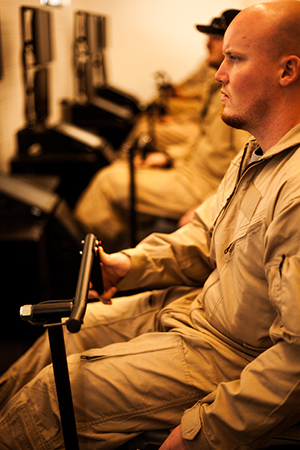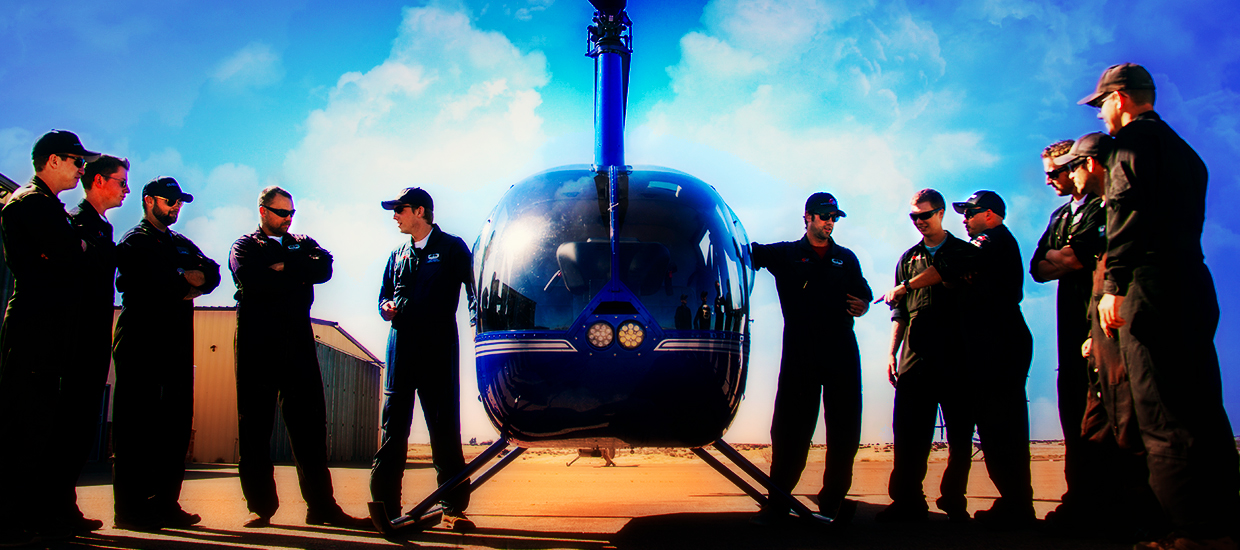The High altitude helicopter flight environment of Prescott, Arizona makes better pilots and aircraft – Just ask Industry Leaders like AgustaWestland and Guidance Aviation.

Prescott, Arizona is still not known to many. But, if you’re a helicopter flight student of the country’s first FAA approved Part 141 high altitude helicopter flight training school, Guidance Aviation, or, a leading manufacturer of helicopters, like AgustaWestland, then you know all about the high altitude flight environment that Prescott offers. Leading helicopter schools and helicopter manufacturers seek out high altitude flight environments like that found in Prescott, Arizona to make better pilots and better aircraft.
Earlier this year, AgustaWestland returned to Prescott, Arizona to continue testing the AW189 Prototype. On October 10, 2013, it was announced by AgustaWestland that the AW189 has entered operational service. Daniele Romiti, Chief Executive Officer, AgustaWestland, said, “Completing the very first AW189 which will enter operational service is a tremendous program achievement to AgustaWestland and to our customer. With this event we’ve brought to life the first and only new generation production aircraft in its category with an extremely reduced time to market, meeting the most stringent requirements set by the relevant authorities and by the market. With many orders by a number of major customers already logged to date, we’re confident that this will be just the first of hundreds of AW189s to be delivered in the coming years.”

During the flight testing stage of the AW189, Agusta Westland’s test pilot, Marco Feller, said they chose Prescott, Arizona for two very important reasons: altitude and heat. During a second set of “high and hot” tests, which took place in the Summer of 2013, factors including engine performance and flight controls were tested.
AgustaWestland is not alone in the pursuit of hot and high flight environments. Back in 1998, John Stonecipher, established Guidance Aviation’s first helicopter flight training school in Prescott, AZ. “There was a clear need for a helicopter flight training school based in a high altitude environment. The Prescott Municipal Airport is based at an altitude of 5,045′ ft above sea level, making it an ideal location. Our students are immersed daily in high altitude helicopter operations,” states Stonecipher.
Understanding Density Altitude – FAA.gov

“Although density altitude is not a common subject for “hangar flying” discussions, pilots need to understand this topic. Density altitude has a significant (and inescapable) influence on aircraft and engine performance, so every pilot needs to thoroughly understand its effects. Hot, high, and humid weather conditions can cause a routine takeoff or landing to become an accident in less time than it takes to tell about it.
Density Altitude Defined – Types of Altitude
Pilots sometimes confuse the term “density altitude” with other definitions of altitude. To review, here are some types of altitude:
- Indicated Altitude is the altitude shown on the altimeter.
- True Altitude is height above mean sea level (MSL).
- Absolute Altitude is height above ground level (AGL).
- Pressure Altitude is the indicated altitude when an altimeter is set to 29.92 in Hg (1013 hPa in other parts of the world). It is primarily used in aircraft performance calculations and in high-altitude flight.
- Density Altitude is formally defined as “pressure altitude corrected for nonstandard temperature variations.”
Why does Density Altitude Matter? High Density Altitude = Decreased Performance

The formal definition of density altitude is certainly correct, but the important thing to understand is that density altitude is an indicator of aircraft performance. The term comes from the fact that the density of the air decreases with altitude. A “high” density altitude means that air density is reduced, which has an adverse impact on aircraft performance. The published performance criteria in the Pilot’s Operating Handbook (POH) are generally based on standard atmospheric conditions at sea level (that is, 59 oF or 15 oC. and 29.92 inches of mercury). Your aircraft will not perform according to “book numbers” unless the conditions are the same as those used to develop the published performance criteria. For example, if an airport whose elevation is 500 MSL has a reported density altitude of 5,000 feet, aircraft operating to and from that airport will perform as if the airport elevation were 5,000 feet.
High, Hot, and Humid

High density altitude corresponds to reduced air density and thus to reduced aircraft performance. There are three important factors that contribute to high density altitude:
1. Altitude – The higher the altitude, the less dense the air. At airports in higher elevations, such as those in the western United States, high temperatures sometimes have such an effect on density altitude that safe operations are impossible. In such conditions, operations between midmorning and midafternoon can become extremely hazardous. Even at lower elevations, aircraft performance can become marginal and it may be necessary to reduce aircraft gross weight for safe operations. Note: This document was adapted from the original Pamphlet P-8740-2 on density altitude.

2. Temperature – The warmer the air, the less dense it is. When the temperature rises above the standard tempera- ture for a particular place, the density of the air in that location is reduced, and the density altitude increases. Therefore, it is advisable, when performance is in question, to schedule operations during the cool hours of the day (early morning or late afternoon) when forecast temperatures are not expected to rise above normal. Early morning and late evening are sometimes better for both departure and arrival.
3. Humidity – Humidity is not generally considered a major factor in density altitude computations because the effect of humidity is related to engine power rather than aerodynamic efficiency. At high ambient tempera- tures, the atmosphere can retain a high water vapor content. For example, at 96 oF, the water vapor content of the air can be eight (8) times as great as it is at 42 oF. High density altitude and high humidity do not always go hand in hand. If high humidity does exist, however, it is wise to add 10 percent to your computed takeoff distance and anticipate a reduced climb rate.” – FAA.gov
To read this entire FAA document, go to: FAA Density Altitude
Guidance Aviation is a leading helicopter flight training organization with schools in Prescott, Arizona and Baton Rouge, Louisiana. Contact Guidance Aviation today and get your career started as a professional helicopter pilot.
Career Placement in the Helicopter Industry: High Altitude Matters
High Altitude Helicopter Flight Training: A US Marine Veteran’s Perspective




